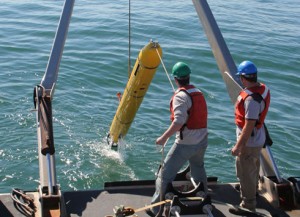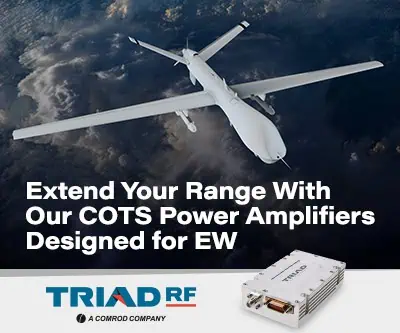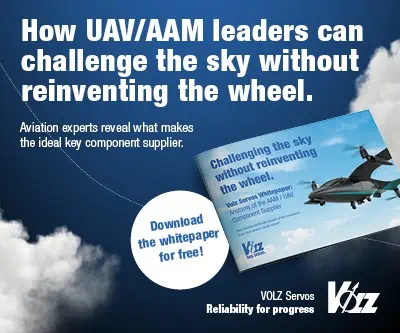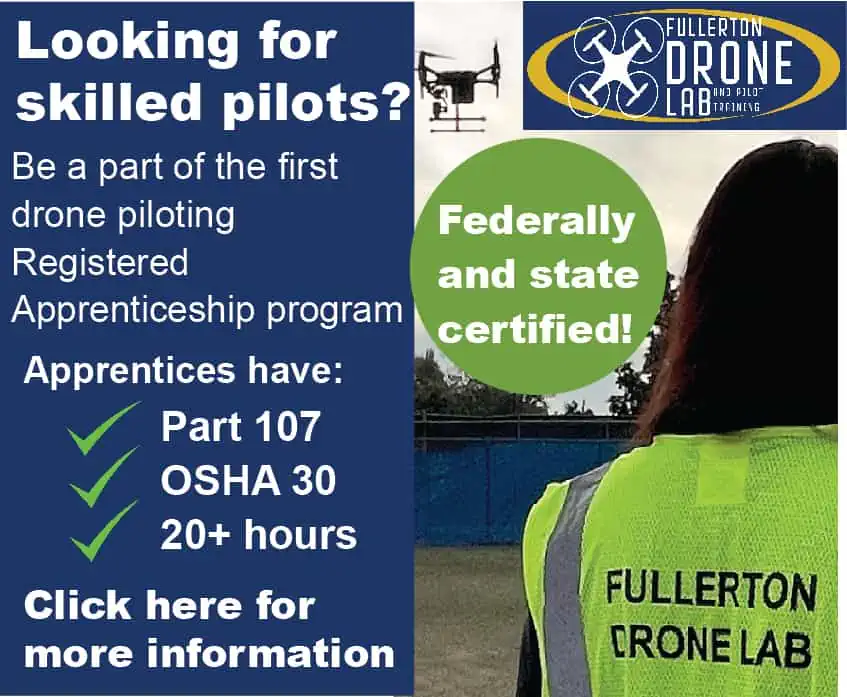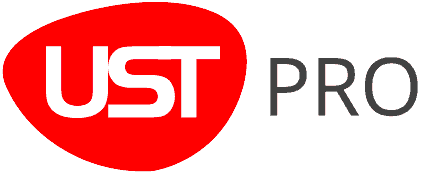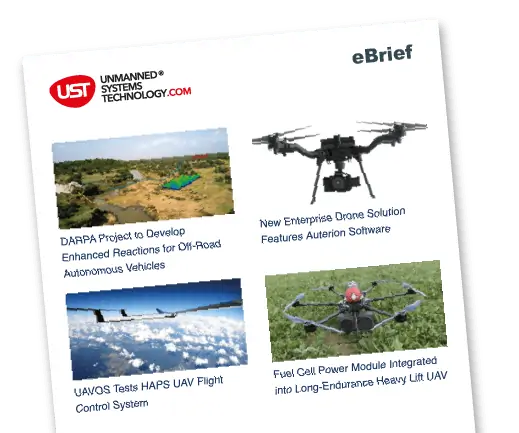SRI International has successfully demonstrated unprecedented capabilities for conducting underwater chemical surveys with its in situ membrane introduction mass spectrometry (MIMS) device integrated into a Bluefin-12 autonomous underwater vehicle (AUV) developed and manufactured by Bluefin Robotics.
Advanced underwater surveys are in demand by researchers and companies involved in monitoring and protecting ocean resources and oil and gas infrastructure, conducting oil and gas exploration, and analyzing the impact of operations on marine environments. The sensitivity, specificity, and versatility of mass spectrometry enable in-water identification and analysis of a wide range of chemicals. Most underwater analytical equipment is tethered to a surface vessel, restricting the ability for continuous monitoring and testing, while at the same time increasing the costs, complexities and risks associated with advanced hydrocarbon monitoring.
“The ability to combine highly sensitive and calibrated mass spectrometry with AUVs gives researchers and industry a new tool for critical underwater survey applications,” said Timothy Short, manager of the Marine and Space Sensing Group in the Space and Marine Technology Program at SRI International. “Much as we are seeing an increase in valuable data collection applications for unmanned aerial vehicles (UAVs), we can now collect and analyze underwater data more efficiently and accurately. The integrated SRI-Bluefin solution is unprecedented for its ease of deployment, advanced survey capabilities, and reduced cost of operations.”
The unique capabilities of the SRI MIMS device integrated into the Bluefin-12 AUV platform addresses complex survey and data collection challenges associated with ocean monitoring and exploration, including an enhanced ability to differentiate hydrocarbon sources (e.g., biogenic versus thermogenic) and high-fidelity baseline measurements to understand with greater accuracy the impact of drilling in specific areas.
“We are pleased SRI has chosen a Bluefin system for their initial MIMS integration – an effort providing a perfect example of the AUV technology’s flexibility for rapid sensor demonstration,” said Omer Poroy, vice president of Business Development at Bluefin Robotics. “Our client base is eager to apply Bluefin AUVs to their hydrocarbon monitoring needs, and we look forward to working with SRI to optimize the equipment for use in the commercial market space.”
The integrated system offers several key benefits relative to other solutions on the market:
- Cost-feasible for commercial applications – AUV integration delivers more cost-effective mapping of light hydrocarbons over large areas, which is critical as mass spectrometry expands from a research instrument to a valuable data-gathering tool for commercial applications in the oil and gas industry.
- Ability for continuous measurement – The true value of underwater mass spectrometers is the ability to achieve continuous measurement of volatile gases, light hydrocarbons, and organic compounds. By untethering underwater monitoring equipment from the ship, surveys can traverse large areas of the ocean or extended pipelines without interruption, enabling individual and multiple survey collections of real-time data each time the AUV is submerged.
- Reduced operational risk – Underwater hydrocarbon survey launch and recovery operations involving equipment tethered to ships pose a greater risk the longer the connection is in place. Shifting to an AUV-based survey reduces operational risks to personnel and vital and costly equipment.
- Increased quality of data – The stability of AUVs leads to an increased quality data collection process. Untethered from a surface vessel, maneuverability is more precise and navigation more accurate. AUVs collect high quality geo-referenced data more efficiently than towed systems.




